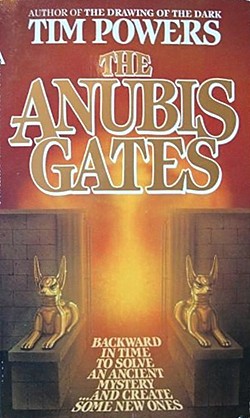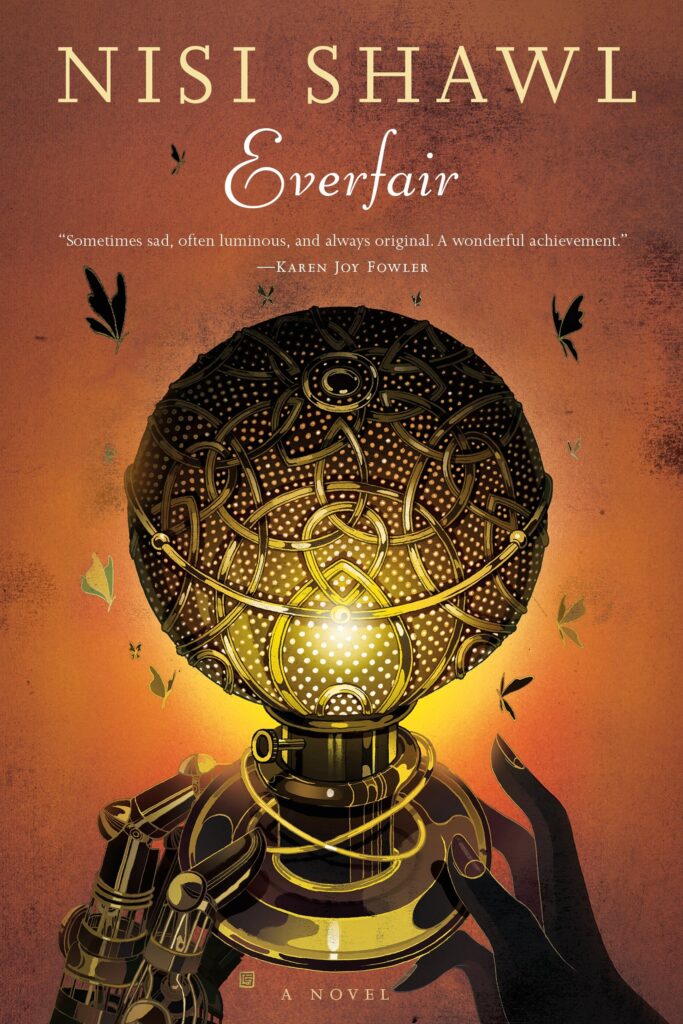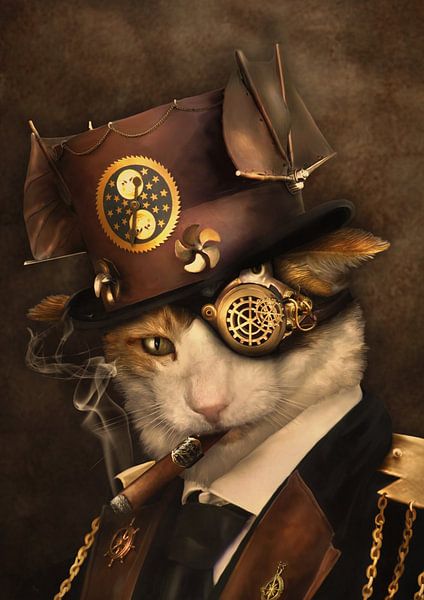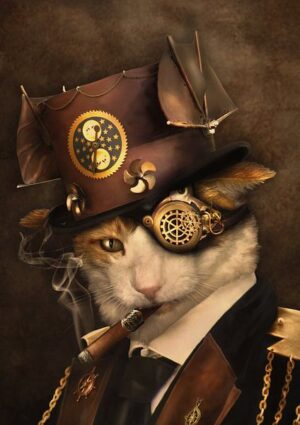In an age where technology evolves at breakneck speed, it’s curious—and compelling—that one of the most popular speculative subcultures looks not forward, but backward. Steampunk, a retro-futuristic movement that merges the aesthetics of the 19th century with imagined advanced technology, captivates with its brass gears, steam engines, and Victorian flair. But beneath the goggles and gears lies a rich cultural history and a unique lens through which to view art, literature, and society.
Origins: A Literary Rebellion
Steampunk’s roots lie in literature, specifically in the speculative fiction of the 19th century. Writers like Jules Verne, H.G. Wells, and Mary Shelley envisioned a future powered by the scientific principles of their time—mainly steam and clockwork—while exploring the human consequences of unchecked technological advancement. Though these authors never used the term “steampunk,” their works laid the foundation.
The term “steampunk” itself wasn’t coined until the 1980s. Science fiction author K.W. Jeter used it semi-facetiously in a letter to Locus magazine in 1987, seeking a name for the kind of Victorian-inspired speculative fiction he and others—like Tim Powers (The Anubis Gates) and James P. Blaylock (Homunculus)—were writing. Inspired by “cyberpunk,” which focused on futuristic, dystopian high-tech worlds, “steampunk” suggested a retro counterpart rooted in the steam age rather than digital electronics.

Evolution: From Page to Pop Culture
From its literary inception, steampunk has evolved into a full-blown cultural movement, encompassing fashion, art, film, music, and even maker culture. In the 1990s and 2000s, steampunk found fertile ground as an aesthetic and creative identity for those disillusioned with modern homogenization and digital overload.
Films like The League of Extraordinary Gentlemen (2003), Wild Wild West (1999), and Sherlock Holmes (2009) brought steampunk visuals to mass audiences. While critically mixed, these films contributed to a growing appetite for alternate histories and fantastical inventions set against historical backdrops.

Video games also embraced steampunk settings, with titles like Bioshock Infinite, Dishonored, and Arcanum: Of Steamworks and Magick Obscura immersing players in imaginative worlds where technology developed along different paths.
Steampunk became particularly visible in fashion and maker culture. Corsets, waistcoats, top hats adorned with goggles, and modified “ray guns” and mechanical limbs became iconic within the subculture. Craftsmanship and DIY ethics—creating, repurposing, and embellishing—became central. Artists like Jake von Slatt and designers like Kato Lambert helped establish the visual lexicon of the movement, blending historical accuracy with whimsical invention.
The Aesthetic and Philosophy of Steampunk
Steampunk is more than just an aesthetic—it’s a philosophical stance toward technology and society. It poses a compelling “what if”: What if the Industrial Revolution had taken a different trajectory? What if steam and gear-based engineering had continued to dominate, instead of giving way to silicon chips?
At its heart, steampunk offers a critique of modernity. It reflects nostalgia for a time when machines were visible, comprehensible, and handcrafted—not miniaturized and sealed in plastic. The celebration of tangible mechanics over invisible software serves as both a rebuke to and a romanticization of the modern world.
Moreover, steampunk often functions as a form of retro-futurism—a vision of the future as imagined by the past. This can be both hopeful and cautionary. On one hand, it revels in the elegance and ambition of bygone eras; on the other, it invites reflection on the social inequalities and imperial ideologies of the time.
Cultural Significance and Inclusivity
While steampunk draws heavily from Victorian Britain and American Wild West motifs, it has increasingly become more global and inclusive. Movements like Afrosteampunk, Silkpunk, and Dieselpunk reinterpret or expand the aesthetic and thematic boundaries of the genre.

For example, Afrofuturist steampunk, as seen in works like Nisi Shawl’s Everfair, imagines alternate colonial histories where African nations wield technological parity with Western powers. Ken Liu’s The Grace of Kings, associated with “Silkpunk,” blends East Asian classical elements with speculative engineering to challenge Eurocentric genre norms.

In these ways, steampunk has become a tool not just for reimagining history, but for reclaiming it, offering speculative futures to communities often left out of dominant historical narratives.
Steampunk in the 21st Century
Steampunk festivals and conventions—like the Steampunk World’s Fair in New Jersey and Asylum Steampunk Festival in the UK—draw thousands of enthusiasts. These gatherings are part spectacle, part salon: spaces for creativity, performance, and dialogue. Attendees showcase handcrafted gadgets, elaborate costumes, and participate in workshops ranging from gear assembly to speculative writing.

In academia, steampunk has been analyzed for its postmodern qualities, its interplay of nostalgia and innovation, and its challenge to linear conceptions of technological progress. Scholars such as Jeff VanderMeer and Diana M. Pho have written extensively about how steampunk both resists and reclaims history.
Yet some critics question steampunk’s depth, arguing that it can risk aesthetic fetishization of the past without engaging with its darker realities—colonialism, classism, and industrial exploitation. This has led to more self-aware works that tackle these themes directly, using the genre to explore complex social issues rather than simply escape them.
Why Steampunk Endures
Steampunk continues to thrive because it offers a vision of technology that is imaginative, understandable, and beautiful. In a world where the inner workings of our tools are increasingly opaque, steampunk lays bare the gears and steam valves of progress.
It also allows for a deeply personal and participatory creativity. Whether through cosplay, fan fiction, or maker projects, steampunk invites people to become inventors of their own world. It is, in many ways, a democratizing form of speculative fiction: one that honors the individual tinkerer’s dreams as much as the grand technological narrative.
Finally, steampunk resonates because it straddles a unique cultural tension: a longing for the past and a hunger for a better future. In its ornate contraptions and sepia-toned visions, we see ourselves—nostalgic for a simpler world, yet endlessly curious about what lies ahead.

Conclusion
Steampunk is more than a fashion trend or literary genre—it’s a cultural mirror, refracting history, imagination, and critique through the lens of steam-powered possibility. As long as people question the trajectory of progress and yearn for a world where technology and beauty coexist, steampunk will remain a vibrant and vital form of creative expression.
References
Blaylock, J. P. (1986). Homunculus. Ace Books.
Jeter, K. W. (1987, April). [Letter to the editor]. Locus Magazine.
Liu, K. (2015). The Grace of Kings. Saga Press.
Powers, T. (1983). The Anubis Gates. Ace Books.
Shawl, N. (2016). Everfair: A Novel. Tor Books.
VanderMeer, J., & VanderMeer, A. (Eds.). (2008). Steampunk. Tachyon Publications.
Von Slatt, J. (n.d.). The Steampunk Workshop. Retrieved from http://steampunkworkshop.com
Pho, D. M. (2013). Steampunk as subculture: The paradox of a genre. In R. Housel & V. McGee (Eds.), Steaming into a Victorian Future: A Steampunk Anthology (pp. 27–46). Scarecrow Press.
Films:
Norrington, S. (Director). (2003). The League of Extraordinary Gentlemen [Film]. 20th Century Fox.
Peters, B. (Director). (1999). Wild Wild West [Film]. Warner Bros.
Ritchie, G. (Director). (2009). Sherlock Holmes [Film]. Warner Bros.
Video Games:
Arkane Studios. (2012). Dishonored [Video game]. Bethesda Softworks.
Irrational Games. (2013). BioShock Infinite [Video game]. 2K Games.
Troika Games. (2001). Arcanum: Of Steamworks and Magick Obscura [Video game]. Sierra On-Line.




